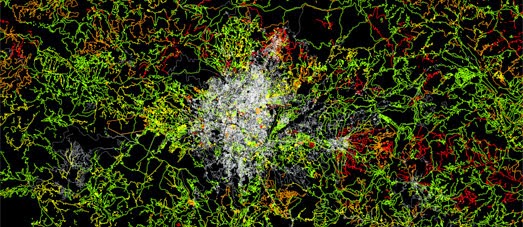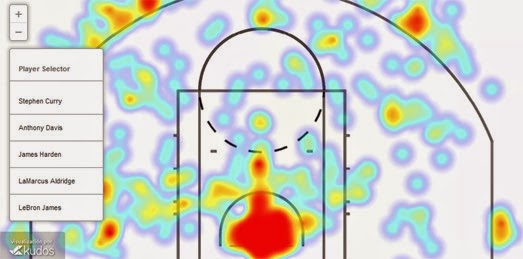Сообщения
Сообщения за апрель, 2015
Improving the Map of Nepal
- Получить ссылку
- X
- Электронная почта
- Другие приложения
Mapping Photographer's Routes
- Получить ссылку
- X
- Электронная почта
- Другие приложения
The Canadian Immigrant Map
- Получить ссылку
- X
- Электронная почта
- Другие приложения
The American Highways Transit Map
- Получить ссылку
- X
- Электронная почта
- Другие приложения
The Walksheds of Boston
- Получить ссылку
- X
- Электронная почта
- Другие приложения
The Mapped Guide to Walking in L.A.
- Получить ссылку
- X
- Электронная почта
- Другие приложения
The Hyundai Factory Street View Tour
- Получить ссылку
- X
- Электронная почта
- Другие приложения
Hello - Planet Earth
- Получить ссылку
- X
- Электронная почта
- Другие приложения
Basketball Shooting Heatmaps
- Получить ссылку
- X
- Электронная почта
- Другие приложения
Map of the Dead
- Получить ссылку
- X
- Электронная почта
- Другие приложения
Mapping London & Berlin's Squatting History
- Получить ссылку
- X
- Электронная почта
- Другие приложения
The Maps of the Week
- Получить ссылку
- X
- Электронная почта
- Другие приложения
Why Your Street Has That Name
- Получить ссылку
- X
- Электронная почта
- Другие приложения
Mapping Life in a Refugee Camp
- Получить ссылку
- X
- Электронная почта
- Другие приложения
Mapping Washington's Life
- Получить ссылку
- X
- Электронная почта
- Другие приложения
Android Pisses All Over Apple
- Получить ссылку
- X
- Электронная почта
- Другие приложения
Animated Football Heat Maps
- Получить ссылку
- X
- Электронная почта
- Другие приложения
The Canadian First Nations Map
- Получить ссылку
- X
- Электронная почта
- Другие приложения
Creating Stories from Historical Maps
- Получить ссылку
- X
- Электронная почта
- Другие приложения
Choropleth Transitions in Leaflet
- Получить ссылку
- X
- Электронная почта
- Другие приложения
Mapping Australian Marine Life
- Получить ссылку
- X
- Электронная почта
- Другие приложения
Robben Island Street View
- Получить ссылку
- X
- Электронная почта
- Другие приложения
The Football Fandom Map
- Получить ссылку
- X
- Электронная почта
- Другие приложения
The UK Austerity Map
- Получить ссылку
- X
- Электронная почта
- Другие приложения
Asteroid Mapping
- Получить ссылку
- X
- Электронная почта
- Другие приложения
Tornadoes - Before & After Imagery
- Получить ссылку
- X
- Электронная почта
- Другие приложения
Where the River Flows
- Получить ссылку
- X
- Электронная почта
- Другие приложения
Mapping German Farmers Markets
- Получить ссылку
- X
- Электронная почта
- Другие приложения
New Loch Ness Monster View
- Получить ссылку
- X
- Электронная почта
- Другие приложения
Mapping Migrant Deaths Along the Mexican Border
- Получить ссылку
- X
- Электронная почта
- Другие приложения
The Landsat 8 Cloud Cover Map
- Получить ссылку
- X
- Электронная почта
- Другие приложения




























